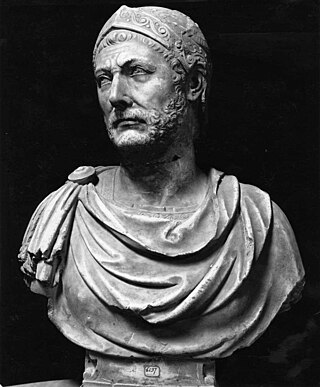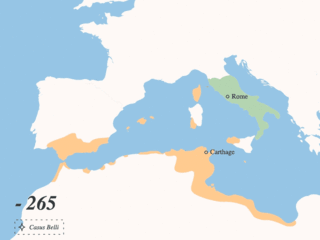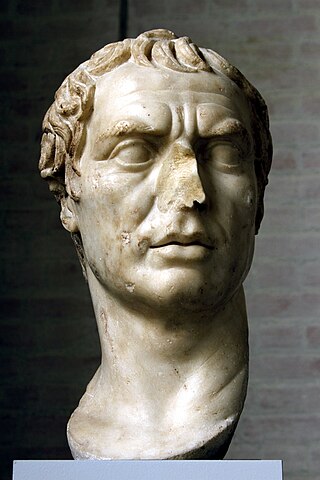Prelude
According to Polybius, [3] after Scipio’s surprise attack and capture of Carthago Nova, the three Carthaginian armies in Iberia remained separated, and their generals at odds with each other, thus giving the Romans a chance to deal with them one by one.
Early in 208 BC, Scipio Africanus, with 30,000 Roman and Italian troops and 10,000 Spanish auxiliaries, moved against Hasdrubal Barca, whose 30,000-strong force had wintered at Baecula, on the upper reaches of the river Baetis (modern day Guadalquivir).
On learning of the Roman approach, Hasdrubal shifted his camp to a strong defensive position – a high and steep plateau south of Baecula, protected by ravines on the flanks and the river to the front and rear. Moreover, the plateau was formed into two steps, on which Hasdrubal posted his light troops on the lower one and his main camp behind.
After his arrival, Scipio was at first uncertain as to how to attack such a formidable position, but concerned that the other two Carthaginian armies might take advantage of his inaction and join with Hasdrubal Barca, he took action on the third day. [6]
Battle
Before his main attack, Scipio sent one detachment to block the entrance to the valley separating the two armies and one to the road leading north to Baecula, thus providing security to his main force, while harassing any Carthaginian attempt to retreat.
After these preliminary deployments were done, the Roman light troops advanced against their Carthaginian counterparts on the first step. Despite the steep slope, and under a shower of arrows, the Romans had little difficulty driving back the Carthaginian light troops once they got into hand-to-hand combat.
After reinforcing his leading force, Scipio derived a pincer attack on the flanks of the Carthaginian main camp by ordering Gaius Laelius to lead half of the remaining heavy foot to the right of the enemy position, and he himself scaling the left.
Hasdrubal, meanwhile, was under the impression that the Roman attack was only a skirmish (Scipio had hidden his main army in camp until the final attack) and failed to properly deploy his main force, thus his ill-prepared army was caught on three sides by the Romans.
Despite being trapped, Hasdrubal was able to retreat unmolested with his elephants, main baggage train, and some of his Carthaginian troops. It appeared that his main losses in the battle were the majority of his light troops and Iberian allies. This was largely due to the legionnaires' choice to plunder the Carthaginian camp rather than pursue Hasdrubal with any earnestness.
Aftermath
After the battle, Hasdrubal led his depleted army (mainly formed by Celtiberian mercenaries and Gallic warriors) over the western passes of the Pyrenees into Gaul, and subsequently into Italy in an attempt to join his brother Hannibal.
Scipio's failure to stop Hasdrubal's march to Italy was criticized by the Roman Senate. Scipio did not exploit his victory at Baecula to drive out the Carthaginians from Iberia, instead choosing to withdraw to his base at Tarraco. He secured alliances with many of the Iberian tribes, who switched sides after the Roman successes at Carthago Nova and Baecula.
Carthaginian reinforcements landed in Iberia in 207 BC, and would soon launch a final attempt to recover their losses at the Battle of Ilipa in 206 BC.

Hannibal was a Carthaginian general and statesman who commanded the forces of Carthage in their battle against the Roman Republic during the Second Punic War.

The Punic Wars were a series of wars between 264 and 146 BC fought between the Roman Republic and Ancient Carthage. Three wars took place, on both land and sea, across the western Mediterranean region and involved a total of forty-three years of warfare. The Punic Wars are also considered to include the four-year-long revolt against Carthage which started in 241 BC. Each war involved immense materiel and human losses on both sides.

The Second Punic War was the second of three wars fought between Carthage and Rome, the two main powers of the western Mediterranean in the 3rd century BC. For 17 years the two states struggled for supremacy, primarily in Italy and Iberia, but also on the islands of Sicily and Sardinia and, towards the end of the war, in North Africa. After immense materiel and human losses on both sides, the Carthaginians were once again defeated. Macedonia, Syracuse and several Numidian kingdoms were drawn into the fighting, and Iberian and Gallic forces fought on both sides. There were three main military theatres during the war: Italy, where Hannibal defeated the Roman legions repeatedly, with occasional subsidiary campaigns in Sicily, Sardinia and Greece; Iberia, where Hasdrubal, a younger brother of Hannibal, defended the Carthaginian colonial cities with mixed success before moving into Italy; and Africa, where Rome finally won the war.
The Battle of Zama was fought in 202 BC in what is now Tunisia between a Roman army commanded by Scipio Africanus and a Carthaginian army commanded by Hannibal. The battle was part of the Second Punic War and resulted in such a severe defeat for the Carthaginians that they capitulated, while Hannibal was forced into exile. The Roman army of approximately 30,000 men was outnumbered by the Carthaginians who fielded either 40,000 or 50,000; the Romans were stronger in cavalry, but the Carthaginians had 80 war elephants.
Gnaeus Cornelius Scipio Calvus was a Roman general and statesman during the third century BC. He played a major part in the Second Punic War, establishing Roman rule in the east of the Iberian peninsula and tying up several Carthaginian armies to keep them from reinforcing Hannibal.
Mago Barca was a Carthaginian, member of the Barcid family, who played an important role in the Second Punic War, leading forces of Carthage against the Roman Republic in Iberia and northern and central Italy. Mago was the third son of Hamilcar Barca, was the brother of Hannibal and Hasdrubal, and was the brother-in-law of Hasdrubal the Fair.

Hasdrubal Barca, a latinization of ʿAzrubaʿal son of Hamilcar Barca, was a Carthaginian general in the Second Punic War. He was the brother of Hannibal and Mago Barca.
Gaius Laelius was a Roman general and statesman, and a friend of Scipio Africanus, whom he accompanied on his Iberian campaign and his African campaign. His command of the Roman fleet in the attack on New Carthage and command of the Roman cavalry at Zama contributed to Scipio's victories.

The Battle of Ilipa was an engagement considered by many as Scipio Africanus’s most brilliant victory in his military career during the Second Punic War in 206 BC.
The Battle of the Upper Baetis was a double battle, comprising the battles of Castulo and Ilorca, fought in 211 BC during the Second Punic War between a Carthaginian force led by Hasdrubal Barca and a Roman force led by Publius Cornelius Scipio and his brother Gnaeus. The immediate result was a Carthaginian victory in which both Roman brothers were killed. Before this defeat, the brothers had spent seven years campaigning against the Carthaginians in Hispania, thus limiting the resources available to Hannibal, who was simultaneously fighting the Romans in Italy.
Hasdrubal Gisco, a latinization of the name ʿAzrubaʿal son of Gersakkun, was a Carthaginian general who fought against Rome in Iberia (Hispania) and North Africa during the Second Punic War.

The Battle of Cissa was part of the Second Punic War. It was fought in the fall of 218 BC, near the Celtic town of Tarraco in north-eastern Iberia. A Roman army under Gnaeus Cornelius Scipio Calvus defeated an outnumbered Carthaginian army under Hanno, thus gaining control of the territory north of the Ebro River that Hannibal had just subdued a few months prior in the summer of 218 BC. This was the first battle that the Romans had ever fought in Iberia. It allowed the Romans to establish a secure base among friendly Iberian tribes, and due to the eventual success of the Scipio brothers in Spain, Hannibal looked for but never received reinforcements from Spain during the war.

The Battle of Ibera, also known as the Battle of Dertosa, was fought in the spring of 215 BC on the south bank of the Ebro River near the town of Ibera and was part of the Second Punic War. A Roman army, under the command of the brothers Gnaeus and Publius Scipio, defeated a similarly sized Carthaginian army under Hasdrubal Barca. The Romans, under Gnaeus Scipio, had invaded Iberia in late 218 BC and established a foothold after winning the Battle of Cissa. This lodgement, on the north-east Iberian coast, between the Ebro and the Pyrenees, blocked the route of any reinforcements from Iberia for the army of Hannibal, who had invaded Italy from Iberia earlier in the year. Hasdrubal attempted to evict the Romans in 217 BC, but this ended in defeat when the Carthaginian naval contingent was mauled at the Battle of Ebro River.

The battle of the Great Plains was fought in 203 BC in modern Tunisia between a Roman army commanded by Publius Cornelius Scipio, and allied Carthaginian and Numidian armies commanded by Hasdrubal Gisco and Syphax respectively. The battle was part of the Second Punic War and resulted in a heavy defeat for Carthage.
The Battle of Cirta was fought in 203 BC between an army of largely Masaesyli Numidians commanded by their king Syphax and a force of mainly Massylii Numidians led by Masinissa, who was supported by an unknown number of Romans under the legate Gaius Laelius. It took place somewhere to the east of the city of Cirta and was part of the Second Punic War. The numbers engaged on each side and the casualties suffered are not known.

The Battle of the Rhône Crossing was a battle during the Second Punic War in September of 218 BC. Hannibal marched on the Italian Alps, and an army of Gallic Volcae attacked the Carthaginian army on the east bank of the Rhône. The Roman army camped near Massalia. The Volcae tried to prevent the Carthaginians from crossing the Alps and invading Italy.
The battle of New Carthage took place in early 209 BC when a Roman army under Publius Cornelius Scipio successfully assaulted New Carthage, the capital of Carthaginian Iberia, which was defended by a garrison under Mago. The battle was part of the Second Punic War.
This section of the timeline of Hispania concerns Spanish and Portuguese history events from the Carthaginian conquests to before the barbarian invasions.

Indibilis and Mandonius were chieftains of the Ilergetes, an ancient Iberian people based in the Iberian Peninsula. Polybius speaks of the brothers as the most influential and powerful of the Iberian chieftains in that period. Livy calls one of the chieftains of the Ilergetes "Indibilis". at the same time, Polybius gives "Andobales" for the same person. They agree that his brother chieftain was Mandonius.











